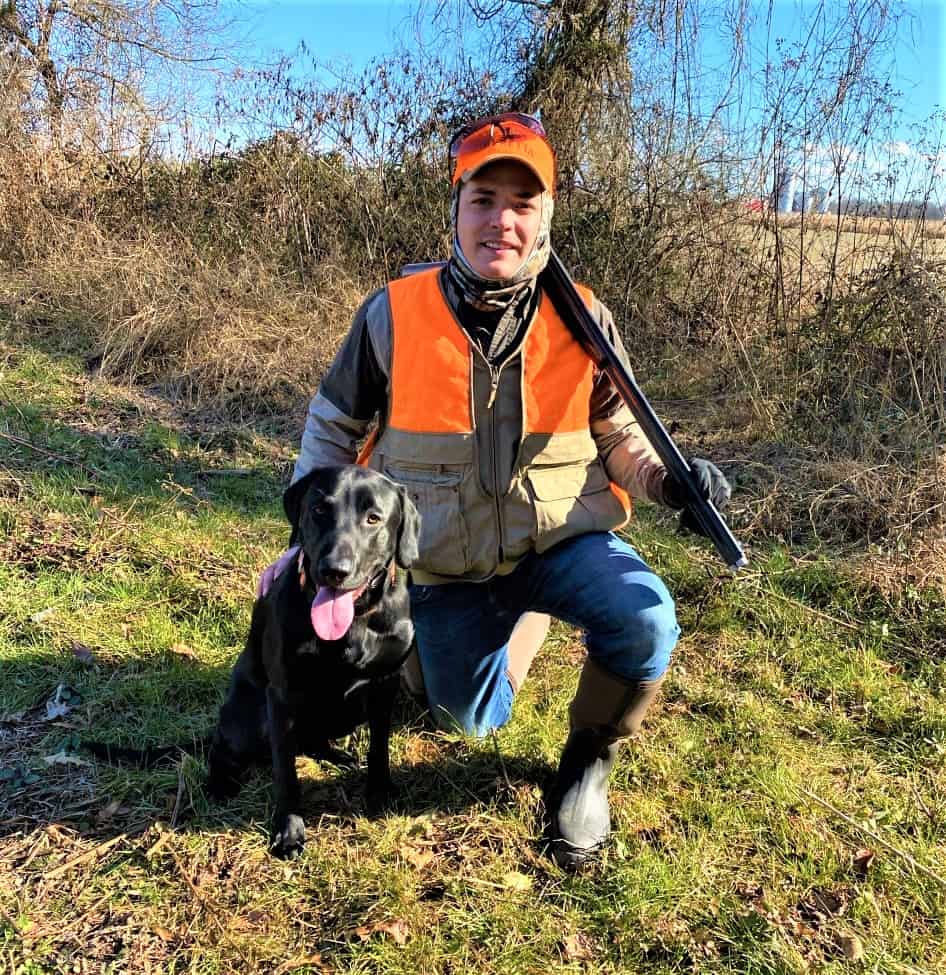Sporting Life

Hobbes on the Hunt for Rooster
By Dennis Doyle
Hobbes, my still growing black Lab pup, hesitated at his first whiff of game bird in the thick growth. It wasn’t exactly the same scent as that of the quail or partridge he’d encountered in the past; this was a bit different. I’ve no idea what information that first smell imparted but it was enough for him to exercise additional caution as he closed in. That turned out to be a good thing.
We were hunting at Native Shores Hunting Preserve along an overgrown hedgerow bordering a harvested crop field, with some dense cover. I was on one side, my son Harry was on the other and Hobbes was in the middle.
The big ringneck rooster came up out of the waist-high weeds as they usually do, like an angry attack helicopter. First there is a thunder clap of its powerful wings, then the screeching, raspy crowing announcing its ire as it emerged, an improbably big, gaudy bird with an iridescent blue green head, bright scarlet cheek wattles and a brilliant white collar followed by green, gold and scarlet feathers more colorful than a mandarin’s finest robes.
Even if you’ve experienced this event hundreds of times, and I have, you are never quite prepared. It is a grand event, startling, but one of nature’s finest. Hobbes was tensing to chase but he wasn’t quite sure that this animal was approved game. The sound of our 20-gauge bird guns settled the question for him, however, and he launched himself through the brush after the apparition.
The pheasant’s magnificent tail is longer than its head and body together and if you’re a bird hunter you know well enough not to look at it. If you even glimpse that trailing presence out of the corner of your eye, the sight is so striking your vision is immediately drawn to it, inevitably resulting in your shot going well behind the rapidly accelerating creature.
Both Harrison and I missed that bird with our first barrel (it becomes a tradition) but there’s no doubt why this creature is the most popular game bird in America, it’s a very challenging adversary. Judge Owen Denny, America’s first consul to Shanghai, China in 1881, was so impressed by the bird he encountered in that country, he imported 30 pairs of them to his home estate in Oregon in the hopes it would establish itself.
The gamebirds soon succeeded beyond Denny’s wildest dreams. Today the ringneck pheasant is solidly present in states from Oregon to California, in all the states of the Midwest to the East Coast, and up into Canada, all the way to Nova Scotia. In our Northwestern states the bird is still often referred to as simply, a Chinese. Altogether they number in the many millions in the northern hemisphere.
A particularly hardy bird, they can withstand the harshest winters and roughest terrain but their one critical requirement is the presence of limestone in the soil for reliable reproduction. That is why a few states, including Maryland, depend on periodically releasing farm-raised birds in some areas to insure a consistent presence.
The bird is undeniably quite intelligent, very fast (65 mph) and incredibly sturdy. Easily defending itself from most predators in the wild with its sharp spurs, they are also quite delicious on the table. They are a significant presence on epicurean menus and always remain at the top of most hunters’ scheduling preferences.
Both Harrison and I recovered from our initial surprise, scoring with our second shots as we sent the bird spinning to the ground with Hobbes instantly on it. He was confused at first at its size and abundant feathers and had a bit of difficulty in picking the bird up, but settled for grasping a wing and subsequently went bounding proudly through the bush, bringing the trophy back to us.
That was the start of an Eastern Shore hunt that just got better after that. We ended the day with sufficient birds for a generous four-person dinner, but we picked up a burger for Hobbes on the way home. Pheasant bones are bad for a dog.
Fishfinder:
The big, winter, migrant striped bass are showing up along Maryland’s Atlantic coast and up into the lower Chesapeake. Taking large trolled baits (remember to smash down the barbs—it’s catch-and-release only in the Bay) the fish are not numerous but they are present. Surf anglers are using cut menhaden, cut spot, big bloodworms, clams and big soft plastic jigs. There is also a good tautog bite developing around Ocean City, and up in the Bay the white perch are schooling tightly in waters over 50 feet deep around the Bay Bridge and the mouth of the eastern Bay.
